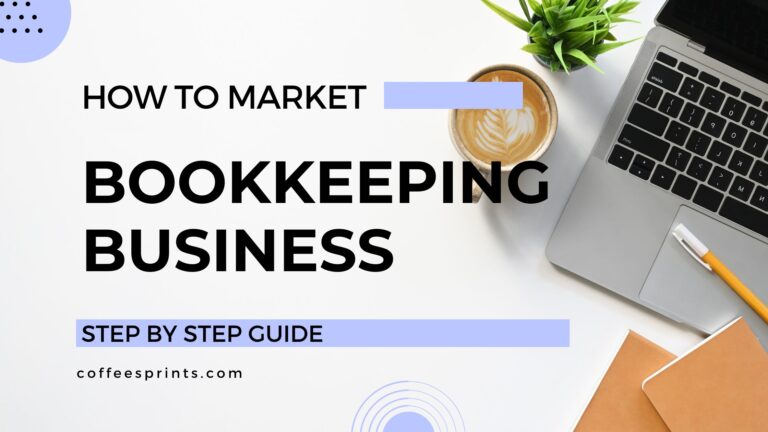What Sells At Flea Markets: Top 10 Profitable Items For Inspiration
Selling items at flea markets and garage sales can be a fun way to make some extra cash. However, knowing what sells well at flea markets can be challenging.
In this guide, we’ll break down the top 10 best-selling flea market items, the ones that consistently attract shoppers and put cash in your pocket. These ideas will help you set up a booth that gets noticed and, most importantly, sells!
How to choose products to sell at flea markets?
You think you have a great product and decide to sell it at flea markets, but how do you know if your product is the right one?
Here are some factors to consider before proceeding.
Passion: Your passion drives your execution in business, life, and everything you do. So ask yourself: “Am I passionate about this idea?” If not, rethink your product choice.
Trends: Well, you can use this option to narrow down your interests further. It’ll help you hone in on specific items instead of casting a wide net. If you’re not sure about the current trends, make sure to walk to the nearest store (that sells products you want to make), or check out Pinterest and Etsy to understand what works well among your customers.
Unique: You don’t always have to come up with original or unique ideas. But it’s very important to find an element in your product that makes it stand out from the crowd. In short, your product should have a unique selling point (USP).
Demand: This is another critical factor for any product to sell anywhere.
Does your product meet the customer’s demand?
Your product can be a “need,” like essential household items, or a “want,” like trendy decor pieces. So ensure your product sells well in your region.
Also, remember that product demand depends on demographics, too.
What sells well in one place may not work in another. For instance, vintage collectibles might be in high demand in certain locales known for their appreciation of history and art but may not be in another place.
How do you understand whether a product sells well or not?
Do your research on local preferences and trends. Visit local markets, talk to potential customers, and use online tools to analyze demand trends. This groundwork will help you choose products that are not only popular but also highly sought after in your specific market.
Profit Margin: Price plays a key role in determining your profits. The profit margin is essentially the difference between the cost of your product and the price at which you sell it.
Research the market to understand the pricing range for similar products. You don’t want to price yourself out of the market, but you also don’t want to underprice and leave money on the table.
Offering bundles or discounts on bulk purchases can attract more buyers while increasing your overall profit margin.
To maximize your margins, try to keep your costs low while setting a competitive selling price. For example, if you can source a popular item at a low cost, you can mark it up significantly while still offering a good deal to your customers.
So, minimizing costs plays another key role.
Consider all associated costs, such as production, shipping, rental fees, and marketing expenses, when calculating your costs. Do not make a mistake overlooking these smaller expenses, as they can eat into your profits if not accounted for.
Personalized: These days, people seem to like everything designed just for them. If there’s a way to personalize and design the items to suit their wants, your customers will shell out the cash for it! Though this is not a requirement, it’s a good-to-have option for your store.
Before we get started with the top items that sell well at flea markets, keep in mind that there are three key steps to winning at flea markets.
- Winning product(s) backed by research (which this article gives you an idea about)
- Inventory handling
- Marketing and Selling (Refer to this article to learn about how you actually do it)
Top 10 Profitable Items to Sell At Flea Markets
Here are the top 10 items that sell best at flea markets.
1. Antique and Vintage Items
Antiques and vintage items are always a hit at flea markets. They could be artwork, toys, clocks, collectibles, musical instruments, and kitchenware. These unique pieces would draw a lot of attention to your booth. Display them prominently in a way to attract antique lovers. But remember, not everyone is on the hunt for antiques, so choosing items with broad appeal is crucial. Look for pieces that are in good condition and have a story to tell – it can make them more intriguing to potential buyers.
2. Jewelry
Jewelry, especially costume jewelry, works well at flea markets. Its affordability and variety make it a favorite among shoppers. Showcase your pieces in an organized and eye-catching manner – perhaps on elegant trays or vintage jewelry boxes. Unique or handmade items can really stand out in the crowd.
You can try offering a mix of styles, from classic to trendy, which can attract a broader audience. Don’t forget to keep a mirror handy so customers can see how the pieces look on them!
3. Outdoor and Garden Decor
Garden decor is a top-selling category at flea markets, especially during the warmer months when people are spending more time sprucing up their outdoor spaces. Shoppers love unique finds like colorful decorative pots, vintage watering cans, charming garden statues, handmade bird feeders, and yard art (gnomes, wind chimes, or even repurposed metal art).
One great selling tip, you ask?
Stage a small part of your booth as a mini garden. You can use artificial grass, crates, or shelves to achieve that. This setup would be visually appealing and could spark interest among potential buyers, making them buy more.
4, Plant and Gardening Items
In spring and summer, you can sell a variety of plants, from succulents to flowering pots, and gardening tools. Consider selling plant stands or decorative planters to complement the plants.
A tip: Offer something unique to your customers to make your booth stand out. In this case, you could provide plant care instructions or planting tips with each plant. It shows that you care about your customers.
5. Action Figurines and Collectibles
If there’s one thing that consistently draws in both kids and grown-up collectors, it’s action figures and collectibles. You can sell vintage superhero figures, limited edition Funko Pops, anime characters, or nostalgic ’90s toys at flea markets.
These items can be a big hit!
On the other hand, collectors are always on the hunt for rare finds, so if you have anything hard-to-find, still-in-the-box, or part of a discontinued series, make sure to highlight it. Even loose figures in good condition can sell if priced fairly and displayed well.
Create a themed setup by grouping similar items together, like Marvel, Star Wars, or Pokémon. This makes it easy and fun for the buyer to search.
You can use clear bins or display stands and consider offering small-bundle deals like Buy 2 Get 1 Free or Buy 3 at X% Discount. Use boards or signage to attract shoppers.
If you’re into collectibles yourself, chatting with customers about the stories or value behind the pieces can build trust—and lead to more sales.
6. Fishing Supplies
Depending on your location, fishing gear can be a surprising hit. Rods, reels, hooks, and other fishing accessories can attract customers who are into fishing. Complement these items with marine-themed decor like fish-shaped wall hangings or nautical signs. Talk about the functionality and quality of the gear to attract fishing enthusiasts.
7. Electronics and Appliances
This one is a no-brainer. Electronics and small appliances are popular for their practicality and often bargain prices. Items like vintage radios, kitchen gadgets, and tech accessories can attract a diverse crowd. Ensure everything is in working order and consider offering demonstrations if possible. Label your items clearly with prices and key features to help customers make quick decisions.
8. Handmade Items
Flea markets are the perfect place to sell your handmade items. People love items that are unique, personal, and made with care—especially when they can meet the maker.
You could sell candles, soaps, beaded jewelry, wooden signs, knit beanies, crochet scrunchies—you name it. These kinds of products stand out because they’re not something you’d find in every big-box store.
And honestly, shoppers love the story behind the product just as much as the product itself. Besides, unique, one-of-a-kind items can create a loyal customer base that appreciates craftsmanship.
9. Clothing and Accessories
A clothing stall for the entire family is always a winner. You can mix different clothing items, along with shoes, bags, and accessories. You don’t need to bring a huge inventory, either. Focus on quality, clean pieces in good condition. Organize your booth by size and category to make browsing easier. Highlight any designer or unique pieces, and consider having a fitting area or mirror.
Seasonal items, such as summer dresses or winter coats, can attract specific buyers at different times of the year. Additionally, you can group them and create a theme like Beach Day Essentials for better customer experience.
10. Glassware
Glassware might not seem like the flashiest thing at a flea market, but trust me, it sells well at flea markets. You could sell mason jars, retro drinkware, colorful vases, and vintage Pyrex. People are always on the lookout for unique pieces to add to their homes or collections.
To be a successful glassware seller, combine nostalgia with functionality. Some buyers are on the hunt for collectible pieces, while others just want a cute set of tumblers for their kitchen.
And if you have handmade or hand-painted items? Even better, those personal touches go a long way.
Try to group items by style or color for a more curated look. Place delicate or eye-catching pieces up front or on a raised display to draw people in.
Bonus tip: If something has a cool backstory (like mid-century or milk glass), try adding a small sign to bring additional value and spark conversations among shoppers.
Since these items are fragile, you should handle the packaging with extra care.
Common FAQs on Selling At Flea Market Tips
1. What items sell best at flea markets?
Some of the best-selling flea market items include vintage home décor, handmade crafts, refurbished furniture, collectibles, clothing (especially vintage or unique pieces), and practical everyday items like tools or kitchenware. Local trends and seasonal demand can also impact what sells best.
2. How do I price items for flea markets?
Price your items based on condition, uniqueness, and what similar products go for in your local market. A common rule of thumb is 50–70% of the retail price for gently used goods. Always leave room for negotiation and consider bundling deals to boost sales and average order value.
3. What’s trending at flea markets in 2025?
In 2025, trending flea market items include upcycled furniture, handmade eco-friendly goods, nostalgic 90s and Y2K items, vinyl records, and budget-friendly home décor. Buyers are drawn to sustainable, one-of-a-kind finds that combine personality and functionality.
Now that you have the list of popular items that sell well at flea markets, it’s time to market and make a decent profit.
Happy selling!






